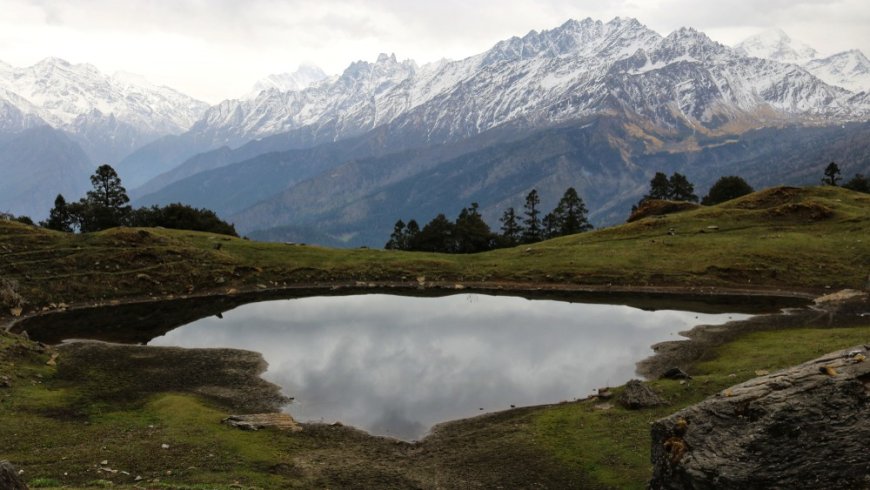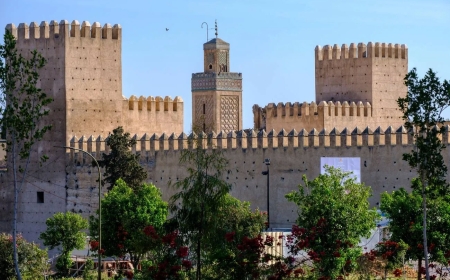Choosing the Right Guide for Your Pangarchulla Peak Trek

Introduction
So, you’ve set your sights on the Pangarchulla Peak Trek—great choice! This trek is not just about scaling heights but about immersing yourself in the untouched beauty of the Garhwal Himalayas. Imagine traversing snow-covered ridges, breathing in crisp mountain air, and ending your day under a blanket of stars. But here’s the thing: the right guide can make or break this experience. Having a knowledgeable and supportive guide is like having a safety net, a friend, and a storyteller all rolled into one. Trust me, it’s not just about reaching the summit—it’s about doing it the right way.
When I first planned my trek, I thought hiring a guide was optional. Spoiler alert: it’s not! After a near-miss navigating a snow-covered trail, I realized the value of expertise. Let’s dive into why choosing the right guide is crucial and how you can find the perfect one for your adventure.
Why Pangarchulla Peak Is Worth It
What Makes This Trek Special?
Let me paint you a picture: You’re trekking through forests alive with rhododendrons, crossing meadows with panoramic views, and scaling challenging ridges with snowy peaks all around. Sounds dreamy, right? The Pangarchulla trek is famous for its changing landscapes, offering everything from lush greenery to icy, high-altitude terrains. The final summit push, though steep and tough, is what makes the experience unforgettable. Every step you take brings a mix of challenge and thrill, rewarding you with breathtaking views at every turn.
But it’s not just about the views. This trek gives you the chance to escape from the chaos of daily life. Out here, it’s just you, the mountains, and your determination to reach the top. And the sense of achievement you get when you reach the top? It’s like nothing else.
When Should You Plan Your Trek?
Timing is everything when it comes to a Himalayan trek. For Pangarchulla, the best seasons are spring (April to June) and autumn (September to November). During spring, you’ll see forests bursting with color, while autumn offers crystal-clear skies perfect for capturing postcard-worthy photos. I made the mistake of attempting the trek during the rainy season once—slippery trails and constant downpours were not exactly the adventure I had in mind. Trust me, stick to the recommended months for the best experience.
Do You Really Need a Guide? Absolutely. Here’s Why
Safety First (And Always)
Let’s face it: trekking isn’t just a walk in the park, especially when it’s at high altitudes like Pangarchulla. The trail involves steep ascents, loose rocks, and icy patches, making it tricky even for seasoned trekkers. That’s where a guide comes in. They’re trained to handle emergencies, whether it’s altitude sickness, an injury, or sudden weather changes. When I was on this trek, my guide’s quick thinking during a snowstorm saved us hours of stress (and probably some frostbite).
Think of a guide as your safety net—they’re there to spot dangers you might overlook, like hidden crevices under the snow or sudden weather shifts. They carry essential gear like ropes and first-aid kits, ensuring you’re prepared for any mishaps.
A Treasure Trove of Local Stories
Guides are more than just navigators; they’re storytellers. My guide introduced me to local legends about the surrounding peaks, taught me about the flora and fauna, and even shared tips for spotting Himalayan wildlife. It felt like I was getting a personalized crash course in the region’s history and culture. Without him, I would have just walked past so many interesting spots without realizing their significance.
Having a guide also means you can learn about the local communities you’ll pass through. They’ll introduce you to village customs and help you connect with the people in a way that Google just can’t match.
How to Pick the Perfect Guide
Look for Certified Pros
The first rule of choosing a guide: check their credentials. Certifications from organizations like the Indian Mountaineering Foundation (IMF) or similar bodies indicate that the guide is trained in safety and mountaineering skills. This isn’t just a piece of paper—it’s proof that they know how to handle emergencies and lead treks effectively. I once trekked with an uncertified guide who couldn’t handle a sudden snowstorm, and let’s just say, I learned my lesson the hard way.
Experienced guides often have additional training, such as wilderness first aid or high-altitude survival skills, which can be lifesaving. Don’t hesitate to ask about their qualifications—it’s your right as a trekker.
Experience Counts (Big Time)
Let’s be honest: no amount of training can replace hands-on experience. A guide who has done the Pangarchulla trek multiple times will know every tricky section, alternate route, and potential hazard. My guide had been leading treks for over a decade, and his expertise showed. He knew exactly when to push forward and when to take breaks, ensuring we stayed on track while avoiding burnout.
Ask your guide how many times they’ve done the trek. The more, the better! An experienced guide will also have strong instincts about the weather, which can be a game-changer on summit day.
Independent Guide or Trekking Agency?
The Case for Independent Guides
Independent guides are often locals who know the region inside out. They offer a more personalized experience, adapting the trek to your pace and preferences. I’ve trekked with independent guides before, and it felt more like hiking with a knowledgeable friend than a hired professional. However, they may not have access to the resources and backup support that agencies provide.
Why Agencies Are Worth Considering
Trekking agencies, on the other hand, come with their own set of perks. They usually provide a full package, including porters, meals, and permits, which takes the hassle out of planning. Plus, agencies often have a team of guides and support staff, ensuring there’s backup in case of emergencies. I chose an agency for my Pangarchulla trek, and their organized approach made everything so much smoother.
Both options have their pros and cons, so it ultimately depends on what kind of experience you’re looking for.
How Much Will It Cost You?
Budgeting for Your Guide
Hiring a guide isn’t cheap, but it’s worth every penny. On average, expect to pay ₹2,500 to ₹5,000 per day, depending on their experience and services. Some guides include extras like meals, permits, and gear, while others charge only for their time. Make sure to clarify what’s included before you finalize anything.
Don’t Skimp on Quality
Although it may be tempting to choose the least expensive choice, keep in mind that you get what you pay for. Budget guides may lack experience, while premium guides often bring better gear, deeper knowledge, and higher professionalism. When I opted for a mid-range guide, the balance between cost and quality made all the difference.
Why Picking the Right Guide is a Game-Changer
A good guide doesn’t just help you complete the trek—they transform it into an unforgettable adventure. My guide’s support and encouragement on the final summit push gave me the strength to keep going when I felt like giving up. Choosing the right guide isn’t just about safety—it’s about making the journey as enjoyable as the destination. I personally recommend The Searching Souls for the Pangarchulla Peka trek. Their attention to detail, professional team, and commitment to sustainable trekking make them a standout choice for adventurers.
Conclusion
At the end of the day, your Pangarchulla Peak trek is only as good as the team supporting you. The right guide can elevate your experience from good to absolutely life-changing. They’re not just a helping hand—they’re your compass, your safety net, and your window into the culture and beauty of the Himalayas. Choose wisely, and you’ll walk away with not just incredible memories but a story worth sharing for years to come.
FAQs
-
Do I really need a guide for Pangarchulla?
Yes, unless you’re an experienced trekker familiar with the region. Guides ensure safety, navigation, and a richer trekking experience. -
How much does a guide cost?
Costs range from ₹2,500 to ₹5,000 per day, depending on their experience and what’s included in the package. -
Can I trek Pangarchulla without prior experience?
It’s doable with good fitness and a skilled guide, but expect challenges, especially during the summit push. -
What should I pack for the trek?
Essentials include trekking poles, crampons, layered clothing, and snacks. Always consult your guide for specific recommendations. -
What’s the best way to find a guide?
Use trusted trekking agencies, check reviews online, and ask fellow trekkers for recommendations.
What's Your Reaction?












![Prima Ease CBD Gummies [I've Tested] TRUTH EXPOSED!](https://news.bangboxonline.com/uploads/images/202412/image_430x256_6766ac778f8ee.jpg)








